Home>Dining>Events & Etiquette>What Are The Table Manners In Japan?
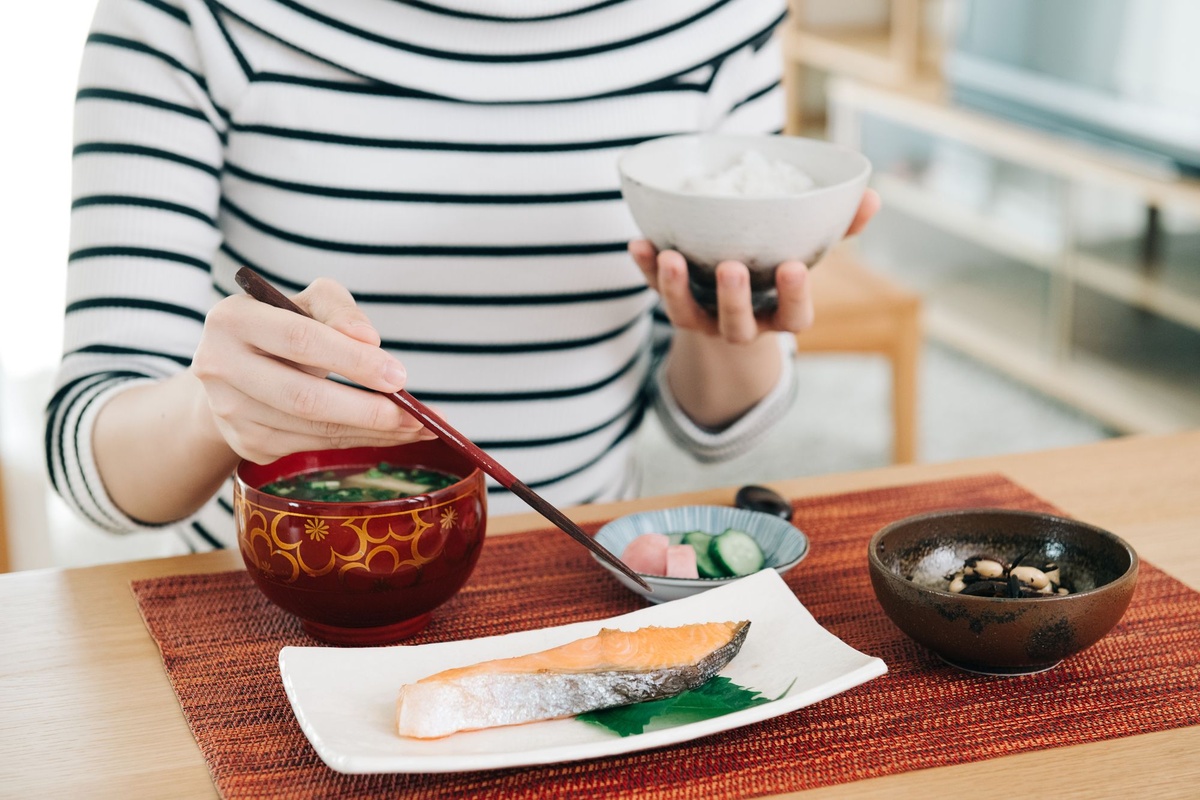

Events & Etiquette
What Are The Table Manners In Japan?
Modified: January 8, 2024
Discover the proper table manners and dining etiquette in Japan. Learn about the cultural significance of events and traditions with our comprehensive guide.
(Many of the links in this article redirect to a specific reviewed product. Your purchase of these products through affiliate links helps to generate commission for Storables.com, at no extra cost. Learn more)
Introduction
In Japan, like in many other cultures around the world, table manners play a significant role in social interactions. Having good etiquette at the table is not only a sign of respect but also a way to show appreciation for the food and the company you are dining with. Japanese table manners have a rich history and are deeply rooted in traditional customs and cultural values.
In Japanese culture, food is considered more than just sustenance; it is a form of art and a way of bringing people together. The focus is not only on the taste and presentation of the food but also on the overall dining experience. Table manners in Japan are designed to ensure that everyone can enjoy the meal in a respectful and harmonious manner.
Understanding and practicing proper table manners in Japan is not only important for visitors to the country but also for locals. It is a way to express cultural understanding and appreciation. Whether you are dining at a formal restaurant, a casual eatery, or someone’s home, adhering to the etiquette will help you navigate the dining experience with ease and avoid committing any unintentional faux pas.
In this article, we will explore the various aspects of table manners in Japan, including seating arrangements, chopstick etiquette, eating and drinking manners, rice and soup etiquette, tea etiquette, and paying the bill. By understanding and following these customs, you will be able to fully immerse yourself in the dining culture of Japan and make a positive impression on those around you.
So, let’s dive into the fascinating world of Japanese table manners and uncover the intricacies that make dining in Japan a unique and unforgettable experience. Whether you are planning a trip to Japan or simply want to enhance your understanding of different cultures, this guide will provide you with valuable insights into the etiquette and customs that govern Japanese dining. Let’s embark on this culinary journey together!
Key Takeaways:
- Embrace Japanese table manners to show respect, appreciation, and cultural understanding. Navigate dining experiences with confidence and create lasting connections through harmonious etiquette practices.
- From seating arrangements to paying the bill, immerse yourself in the rich traditions of Japanese dining. Show gratitude, savor flavors, and foster meaningful connections through proper etiquette.
Read more: What Are Table Manners?
Historical Background
To understand the significance of table manners in Japan, it is important to delve into the historical context that shaped these customs. Japanese dining etiquette has a long and rich history that can be traced back centuries.
In ancient times, Japan was heavily influenced by Chinese and Korean cultures, including their dining customs. However, as Japan developed its own unique cultural identity, it began to adopt and adapt these customs to fit its own traditions and values.
During the Heian period (794-1185), a distinct Japanese dining culture began to emerge. This period marked a shift towards a more refined and sophisticated approach to dining. The aristocracy placed great emphasis on the aesthetics of food, with elaborate presentations and the use of fine tableware becoming the norm.
The influence of Zen Buddhism also played a significant role in shaping Japanese table manners. Zen teachings emphasized mindfulness and tranquility in all aspects of life, including eating. This gave rise to the concept of “shojin ryori,” a vegetarian cuisine practiced by Buddhist monks that focused on simplicity, balance, and gratitude towards the ingredients.
During the Edo period (1603-1868), the culinary arts flourished, and dining rituals became more formalized. The samurai class adopted strict codes of conduct when it came to dining, with an emphasis on discipline and respect. This period saw the birth of elaborate and intricate serving utensils, such as lacquerware and porcelain, which added to the sense of occasion during meals.
In modern times, Japanese table manners continue to be heavily influenced by tradition and cultural values. Harmony, respect, and gratitude remain core principles in Japanese society, and these are reflected in the way people interact with food.
It is also worth noting that Japan values communal dining experiences. Sharing a meal with others is seen as a way to strengthen relationships and foster a sense of community. This communal aspect is reflected in the design of Japanese dining spaces, with low tables and floor cushions, allowing for close proximity and easy conversation.
By understanding the historical background of Japanese table manners, we can appreciate the cultural significance and the deep-rooted traditions that continue to shape dining practices in Japan. Now, let’s explore the specific etiquettes and customs that are observed at the table.
Importance of Table Manners in Japan
Table manners in Japan hold great importance and are considered an integral part of Japanese culture. They go beyond simply following a set of rules and guidelines; they reflect the values and principles that underpin Japanese society. Here are some reasons why table manners are highly valued in Japan:
1. Respect and Courtesy: Japanese table manners are rooted in a deep respect for others. By practicing proper etiquette, individuals show respect not only to the food they are eating but also to the people they are dining with. This respect is characterized by polite gestures, such as saying “Itadakimasu” before eating, which expresses gratitude for the meal.
2. Harmony and Consideration: Japan places a strong emphasis on maintaining harmony and avoiding conflict. Good table manners contribute to a harmonious dining experience by ensuring that everyone can enjoy the meal without disruptions or discomfort. This includes being mindful of others’ preferences, eating quietly, and not wasting food.
3. Appreciation for Food: Japanese cuisine is renowned for its delicate flavors, meticulous presentation, and use of fresh ingredients. Proper table manners allow individuals to fully appreciate and savor the nuances of the food. By showing respect for the ingredients and the effort that went into preparing the meal, one can develop a deeper connection with the culinary experience.
4. Social Interactions: Dining in Japan is seen as a social activity that brings people together. Table manners facilitate smooth and enjoyable interactions, creating a positive and welcoming atmosphere for everyone involved. Observing proper manners helps to establish a sense of camaraderie and fosters stronger relationships among diners.
5. Cultural Identity: Japanese table manners are deeply ingrained in the cultural identity of the country. By adhering to these customs, individuals demonstrate an understanding and appreciation for Japanese traditions. Whether dining in Japan or with Japanese people, practicing proper table manners shows a willingness to embrace the culture and connect on a deeper level.
6. Role Modeling: Table manners are often taught from an early age in Japan. Children learn by observing their elders and imitating their behavior. By embodying good table manners, adults serve as role models for younger generations, passing down cultural values and ensuring the continuity of etiquette practices.
Understanding the importance of table manners in Japan is crucial for both locals and visitors. By embracing these customs, individuals can navigate social situations with confidence, display cultural sensitivity, and forge meaningful connections with others. So, whether you find yourself at a traditional Japanese restaurant or in someone’s home, remember that proper table manners are not just about following rules, but an expression of respect, appreciation, and harmony.
Seating Arrangement
In Japanese dining culture, the seating arrangement plays a significant role in establishing hierarchy and maintaining harmony. Here are some key points to remember about seating arrangements in Japan:
1. Traditional Seating: Traditional Japanese dining often involves sitting on the floor, either on cushions or mats called “tatami.” This style is known as “zashiki” seating. It is common for low tables called “chabudai” to be used, around which diners sit on cushions or kneel.
2. Guest of Honor: In a formal setting, there is a designated “kamiza,” which is the seat of honor. The guest of honor is typically seated farthest from the entrance, facing the door or with their back to the tokonoma (a small alcove for displaying artwork). This position signifies respect and importance.
3. Positioning of Guests: In a traditional Japanese meal, the seating arrangement is carefully considered based on hierarchy and age. The most esteemed guests are seated closest to the kamiza, while those of lower rank or younger age are seated farther away.
4. Gender-Specific Seating: In more formal situations, there may be a gender-specific seating arrangement. Men and women may be seated separately or on opposite sides of the table. However, it is becoming increasingly common for mixed seating arrangements to be observed, especially in more casual settings.
5. Consideration of Space: When arranging the seating, it is important to consider the available space and the comfort of all guests. Adequate legroom and personal space should be provided to ensure a comfortable dining experience.
6. Seating Precedence: The host or the eldest member of the group usually guides the seating arrangements. Guests should wait for the host to indicate where they should sit or receive instructions from the host’s assistant. It is considered impolite to choose your own seat without guidance.
7. Removal of Shoes: In certain traditional dining settings, guests may be required to remove their shoes before sitting down. This is particularly true when dining in someone’s home or in a traditional ryokan (traditional Japanese inn). It is important to follow the host’s lead and place your shoes in the designated area before entering the dining space.
Understanding the seating arrangement in Japan is essential for a positive dining experience and to show respect for cultural customs. By observing the hierarchy and following the guidance of the host, you can navigate the seating arrangement with ease and contribute to a harmonious atmosphere during the meal.
Chopstick Etiquette
Chopsticks are an integral part of Japanese dining culture. They are not just utensils but also a reflection of the traditional customs and values. Understanding and practicing proper chopstick etiquette is essential when dining in Japan. Here are some key points to keep in mind:
1. Holding Chopsticks: Hold your chopsticks near the top, about two-thirds of the way up from the thicker end. Use your thumb, index, and middle fingers to grip the chopsticks firmly but not too tightly. Avoid holding them too close to the tip as it can make it harder to manipulate the food.
2. No Cross-Contamination: One of the most important rules is to avoid cross-contamination between communal dishes. Do not use the end of your chopsticks that have come into contact with your mouth to pick up food from shared plates. Instead, use the opposite end or ask for separate serving utensils, if available.
3. No Stabbing: Stabbing food with chopsticks is considered impolite. Instead, use them to pick up and grip food gently. If you are having difficulty picking up a particular dish, it is acceptable to use the other end of the chopsticks or ask for assistance.
4. Passing Food: When sharing food, it is polite to pass dishes or use serving chopsticks. Do not reach across the table with your chopsticks to grab food directly from a shared plate. Wait for the dish to be passed to you or use the serving chopsticks provided to transfer the food to your plate.
5. Resting Chopsticks: When you are not using your chopsticks, whether it’s during a pause in eating or when you have finished your meal, lay them across your plate or on a chopstick rest if one is provided. Avoid sticking them upright in a bowl of rice, as this is reminiscent of funeral rituals in Japan.
6. Chopstick Placement: At the end of the meal, place your chopsticks neatly together on the chopstick rest or parallel to each other on the table. Avoid leaving them crossed or sticking out haphazardly. This demonstrates respect for the utensils and shows that you have finished eating.
7. Funerals and Chopsticks: In Japanese tradition, chopsticks are also associated with funeral ceremonies. It is considered bad luck to pass food between chopsticks, as this ritual resembles passing cremated bones during a funeral. Avoid engaging in this action during a meal.
By following these chopstick etiquette guidelines, you can demonstrate your respect for Japanese culture and create a more enjoyable dining experience. Remember, practice makes perfect, and even if you are not proficient in using chopsticks, making an effort to learn and improve will be appreciated by your hosts or fellow diners.
Read more: What Are Singapore’s Table Manners?
Eating Etiquette
Eating etiquette in Japan is a combination of cultural norms, traditions, and practical considerations. Following proper eating etiquette not only shows respect for the food and the dining experience but also enhances the overall enjoyment of the meal. Here are some essential points to keep in mind:
1. Saying “Itadakimasu”: Before you start eating, it is customary to say “Itadakimasu,” which means “I humbly receive” or “Let’s eat.” This expresses gratitude for the meal and appreciation for the effort that went into preparing it. Remember to say it before you begin your meal.
2. Japanese Table Manners: When dining in Japan, it is polite to bring the food close to your mouth rather than bending over the dish. This is to maintain cleanliness and avoid dropping food. Avoid blowing on hot food to cool it down; instead, wait for it to cool naturally.
3. Eating Pace: In Japan, it is customary to eat at a moderate pace and avoid rushing through the meal. Take the time to savor each bite and enjoy the flavors of the food. Eating slowly also allows for better digestion and conversation during the meal.
4. Finishing Food: It is considered good manners to finish the food on your plate. Leaving a significant amount of food behind may be seen as wasteful or disrespectful. However, it is also important not to overload your plate and take only what you can comfortably eat.
5. Noise and Smells: When eating, try to keep noise to a minimum. Avoid slurping noodles or soup loudly, as this can be considered impolite. Additionally, be mindful of strong smells from food, such as garlic or spices, as they may overpower the aromas of other dishes on the table.
6. Sharing and Serving: When sharing food from communal dishes, take small portions instead of emptying the entire plate. This allows others to enjoy the dishes as well. If you are serving others, use the serving utensils provided or ask for permission before using your own chopsticks.
7. Gratitude: At the end of the meal, it is customary to express gratitude by saying “Gochisousama deshita,” which means “Thank you for the meal.” This shows appreciation for the food and acknowledges the effort of the cook or the host in providing the meal.
By following these eating etiquette practices, you can fully immerse yourself in the dining experience and show respect for Japanese culture. Remember to observe and follow the lead of the locals or your hosts, as customs may vary slightly depending on the particular setting or region. Enjoy the flavors and the sensory experience of each dish as you indulge in Japan’s culinary delights.
When dining in Japan, it is important to wait to be seated, say “itadakimasu” before eating, and never stick chopsticks upright in a bowl of rice. Always show respect to the host and follow their lead.
Drinking Etiquette
Drinking plays an important role in socializing and bonding in Japanese culture. Whether you are enjoying a traditional tea ceremony or sharing a round of sake with friends, it is important to be aware of the drinking etiquette. Here are some key points to keep in mind:
1. Pouring Drinks: When pouring drinks for others, it is customary to pour for them first before pouring for yourself. Hold the bottle or the vessel with both hands as a sign of respect. This gesture acknowledges the hierarchy and shows consideration for the needs of others.
2. Receiving Drinks: When someone pours a drink for you, accept it with both hands or one hand supporting the pouring hand. This is a gesture of gratitude and respect. Avoid pouring your own drink immediately after someone has poured for you, as it may be seen as a lack of appreciation for their gesture.
3. Cheers or Kanpai: Before taking a sip, it is common to say “Kanpai,” which is the equivalent of “Cheers.” Raise your glass slightly while making eye contact with others at the table. It is polite to clink glasses with each person or simply raise your glass in their direction if clinking is not practical.
4. Drinking Order: In some social settings, there may be a designated drinking order, particularly in formal gatherings or when there is a clear hierarchical structure. Start by serving the most senior or respected person first, and then follow the order accordingly.
5. Pace of Drinking: Pace yourself when drinking in Japan. It is important to be mindful of others and not to get intoxicated quickly. The focus is on enjoying the drink and the company rather than consuming large quantities of alcohol.
6. Refilling Others’ Drinks: Pay attention to the level of others’ drinks and offer to refill them if necessary. However, do not forcefully refill someone’s glass if they decline. Respect their decision and do not pressure them to drink more than they desire.
7. Drinking Responsibly: In Japan, it is important to drink responsibly and be aware of your limits. Excessive drunkenness is generally frowned upon, especially in formal or professional settings. Pace yourself and know when it is appropriate to stop or switch to non-alcoholic beverages.
8. Show Respect for the Drink: Treat your drink with respect by not letting it sit untouched for too long. It is customary to finish your drink, especially if it has been poured for you by someone else.
By following these drinking etiquette guidelines, you can show respect for Japanese customs and create a pleasant and harmonious drinking experience. Remember to drink in moderation, be considerate of others, and enjoy the flavors and the camaraderie that come with sharing a drink in Japan.
Rice Etiquette
Rice holds a special place in Japanese cuisine, and there are specific etiquette guidelines to follow when eating rice. As a staple food in Japan, rice is treated with great respect and appreciation. Here are some key points to keep in mind about rice etiquette:
1. Holding the Rice Bowl: When eating rice from a rice bowl, hold it in one hand and bring it close to your mouth. It is common to lift the bowl slightly towards your mouth to make it easier to gather the rice with your chopsticks. However, be careful not to hold the bowl too close or lift it too high, as it may be seen as improper.
2. Eating Rice: Take small, deliberate bites of rice. Avoid taking exceptionally large mouthfuls or stuffing your mouth, as it can be considered impolite. It is important to consume the rice slowly and savor its texture and flavor.
3. Chopstick Placement: When taking breaks from eating rice, place your chopsticks neatly across the top of your rice bowl. This shows respect for the food and indicates that you are still in the process of enjoying the meal. Avoid leaving your chopsticks sticking upright in the rice, as it resembles a funeral ritual in Japanese culture.
4. Finishing Rice: It is generally expected that you finish all the rice that you have taken. Leaving a significant amount of rice in your bowl may be seen as wasteful or disrespectful. If you are unsure about the portion size, it is better to take a smaller amount initially and get more if needed.
5. No Sharing Rice: Unlike other dishes like soup or side dishes, rice is typically not shared directly from one’s bowl. Each individual is expected to have their own bowl of rice. If you want to share rice with others, use serving utensils or ask for separate bowls.
6. Rice and Soup: In the context of a Japanese meal, it is common to have rice and soup served together. When eating rice and soup together, take small bites of rice, alternating with sips of soup. This helps to balance the flavors and textures of the meal.
7. Eat from the Bowl: When eating rice, it is customary to eat directly from the rice bowl rather than transferring it to a separate plate or bowl. Eating from the bowl signifies a deeper connection and appreciation for the food.
By following these rice etiquette guidelines, you can show respect for Japanese dining traditions and enhance your dining experience. Remember to handle the rice bowl with care, eat in a mindful manner, and appreciate the simple yet essential role that rice plays in Japanese cuisine.
Soup Etiquette
Soup holds a special place in Japanese cuisine, and there are specific etiquette guidelines to follow when enjoying soup. Whether it’s a clear broth, miso soup, or a hearty noodle soup, understanding soup etiquette is essential for a harmonious dining experience. Here are some key points to keep in mind:
1. Holding the Soup Bowl: When eating soup, hold the bowl with both hands and bring it up to your mouth. Support the bowl with one hand while using a spoon or chopsticks with the other hand to consume the soup. Be careful not to slurp loudly or spill the soup.
2. Sipping the Soup: Take small sips of the soup rather than gulping it down. This allows you to fully appreciate the flavors and enjoy the various ingredients. Avoid blowing on the soup to cool it down, instead, wait for it to cool naturally or use your spoon to scoop up a small amount and blow on it before sipping.
3. Using Chopsticks or Spoon: Depending on the type of soup, you will use either chopsticks or a spoon to consume it. When using chopsticks, pick up larger ingredients, such as tofu or vegetables, and eat them. Use the spoon provided to drink the broth. If a spoon is not provided, it is acceptable to bring the bowl to your mouth and sip the broth directly.
4. Eating Noodles: If you are enjoying a soup with noodles, it is acceptable to make some noise while eating them. Slurping noodles is considered a way to enhance the flavors and show appreciation for the dish. However, be mindful of the volume and avoid overly loud or exaggerated slurping.
5. Proper Use of Soup Spoon: When using a spoon to consume soup, use it to gently scoop the liquid and bring it to your mouth. Avoid clanging the spoon against the bowl or making loud noises while consuming soup. Keep your movements smooth and controlled.
6. Finishing the Soup: It is considered polite to finish the entire serving of soup. Leaving a significant amount of soup in the bowl may imply that you did not enjoy the dish or that it was not to your liking. If the amount of soup is too much, take a smaller portion initially and get more if desired.
7. Drinking from the Bowl: When the soup has been consumed but there is a small amount of liquid left in the bowl, it is acceptable to bring the bowl to your mouth and drink directly from it to finish the last remnants of the soup. This generally applies to clear broths or soups that are meant to be consumed entirely.
By following these soup etiquette guidelines, you can enjoy your soup in a respectful and mindful manner. Appreciating the flavors, using the appropriate utensils, and being considerate of the dining environment will contribute to a positive dining experience. So, savor the taste and aroma of the soup as you follow these etiquette practices.
Read more: What Are The 20 Table Manners?
Tea Etiquette
Tea holds a revered place in Japanese culture, and there are specific etiquette guidelines to follow when participating in a traditional Japanese tea ceremony or enjoying tea in general. Whether it’s matcha (powdered green tea) or sencha (steeped green tea), understanding tea etiquette is crucial for a respectful and authentic experience. Here are some key points to keep in mind:
1. Seating and Posture: When participating in a formal tea ceremony or enjoying tea in a traditional setting, maintain an upright posture with your legs folded or kneeling on a cushion. Show respect for the host and the tea by sitting attentively and displaying a calm and composed demeanor.
2. Bowing: Before receiving your tea or when being served by the host, it is customary to bow slightly to express gratitude and respect. The host may also bow when serving or receiving your cup. Follow their lead and reciprocate the gesture.
3. Receiving the Tea: When the tea is served to you, accept it directly with both hands or with one hand supporting the cup from below. This gesture shows appreciation and respect for the tea. As you receive the tea, it is common to say “Onegaishimasu,” which is a polite way of expressing “please” or “I humbly receive.”
4. Holding the Teacup: Grasp the teacup with one hand and place your other hand underneath to support it. Lift the cup slightly and rotate it once, so the front of the cup faces away from you, as a sign of respect to the host. When taking a sip, do so silently and without making any noise.
5. Drinking the Tea: Sip the tea slowly, savoring its flavor and aroma. Do not gulp it down quickly. Traditional Japanese tea is often served hot, so take small sips to avoid burning your mouth. Focus on the tea, allowing its taste to unfold on your palate.
6. Finishing the Tea: When you have finished drinking the tea, use your thumb and index finger to rotate the cup back to its original position. Refrain from emptying your cup completely, as a small amount of tea is often left behind symbolizing that you have had enough.
7. Expressing Gratitude: After finishing the tea, it is customary to express gratitude to the host by saying “Arigatou gozaimashita” or “Kōso arigatou gozaimashita,” which means “Thank you very much.” This gesture acknowledges the effort and care that the host has put into preparing and serving the tea.
Whether participating in a formal tea ceremony or enjoying tea in a casual setting, adhering to these tea etiquette practices demonstrates respect for Japanese tea culture and enhances the overall tea-drinking experience. Remember to approach tea with mindfulness and appreciation for the history and tradition it represents.
Paying the Bill
When it comes to paying the bill in Japan, there are certain customs and etiquette to keep in mind to navigate the process smoothly and show respect. Here are some essential points regarding paying the bill in Japan:
1. Splitting the Bill: In Japan, it is not common to split the bill individually. Instead, the total amount is typically divided equally among all diners (or a specific number of people). This practice ensures fairness and simplicity. If you prefer to pay for your own portion, it is best to discuss this in advance or offer to cover the entire bill yourself.
2. Waiting for the Check: In many restaurants in Japan, the check is not automatically brought to the table at the end of the meal. Instead, it is customary to request the check when you are ready to pay. You can use the phrase “Sumimasen, okaikei onegaishimasu” to politely ask for the bill.
3. Cash Payments: While credit cards are becoming more widely accepted in Japan, it is still common for smaller establishments, especially traditional or local eateries, to accept only cash. It is a good idea to have enough cash on hand when dining out, especially in more remote or rural areas.
4. Tipping: Unlike in many Western countries, tipping is not customary in Japan. It is considered rude to leave money on the table as a tip. The service charge is typically included in the bill, so no further tipping is expected. Exceptional service may be acknowledged with a simple “Arigatou gozaimasu” (thank you) or a polite bow.
5. Handling the Bill: When the bill is presented, the server will usually place it in a small tray or folder. You should pick up the tray or folder and carefully inspect the bill. If you are paying with cash, place the exact amount or slightly more in the tray. If paying with a card, signal to the server that you will be using a card for payment.
6. Payment at the Counter: In some smaller and more casual establishments, you may be required to pay at the cash register or counter. Simply take your bill or tray to the counter, where the cashier will process your payment.
7. Expressing Gratitude: After completing the payment, it is customary to express gratitude to the staff by saying “Arigatou gozaimashita” or “Gochisousama deshita,” which means “Thank you very much” or “It was a feast.” These phrases show appreciation for the meal and the service.
By being aware of these paying etiquette customs, you can navigate the process smoothly and showcase respect for Japanese cultural norms. Remember to be prepared with cash when dining at smaller establishments, and express your thanks to the staff for their hospitality and the culinary experience you enjoyed.
Conclusion
Table manners and etiquette are an integral part of Japanese culture, reflecting the values of respect, harmony, and appreciation. Understanding and practicing proper etiquette when dining in Japan not only shows cultural understanding but also enhances the dining experience for both visitors and locals alike.
From the seating arrangement and chopstick etiquette to the intricacies of eating, drinking, and paying the bill, each aspect of Japanese table manners holds significance. These customs are deeply rooted in tradition and centuries-old practices, showcasing the country’s rich history and cultural identity.
By following these etiquette guidelines, individuals can navigate social interactions with confidence and demonstrate respect for Japanese customs and traditions. Whether you are a tourist exploring the vibrant culinary scene or a resident embracing your cultural heritage, adhering to these customs is a way to strengthen relationships, foster a sense of community, and deepen your appreciation for Japanese cuisine.
Furthermore, practicing proper etiquette extends beyond simply following rules. It is a way to show gratitude for the food you are eating, the effort put into its preparation, and the company you are sharing the meal with. By observing these customs, you actively contribute to a harmonious and enjoyable dining experience, creating lasting memories and connections.
As you explore the world of Japanese table manners, remember to approach it with an open mind and a willingness to learn. Embrace the traditions and customs, and do not be afraid to ask questions or seek guidance if unsure. The cultural exchange that comes with adopting these etiquettes is a valuable part of the dining experience.
In conclusion, table manners in Japan are an integral part of the country’s cultural fabric. By understanding and practicing proper etiquette, you show respect, appreciation, and a genuine understanding of Japanese customs. Immerse yourself in the culinary traditions, savor the flavors, and enjoy the enriching experience of dining in Japan.
Frequently Asked Questions about What Are The Table Manners In Japan?
Was this page helpful?
At Storables.com, we guarantee accurate and reliable information. Our content, validated by Expert Board Contributors, is crafted following stringent Editorial Policies. We're committed to providing you with well-researched, expert-backed insights for all your informational needs.
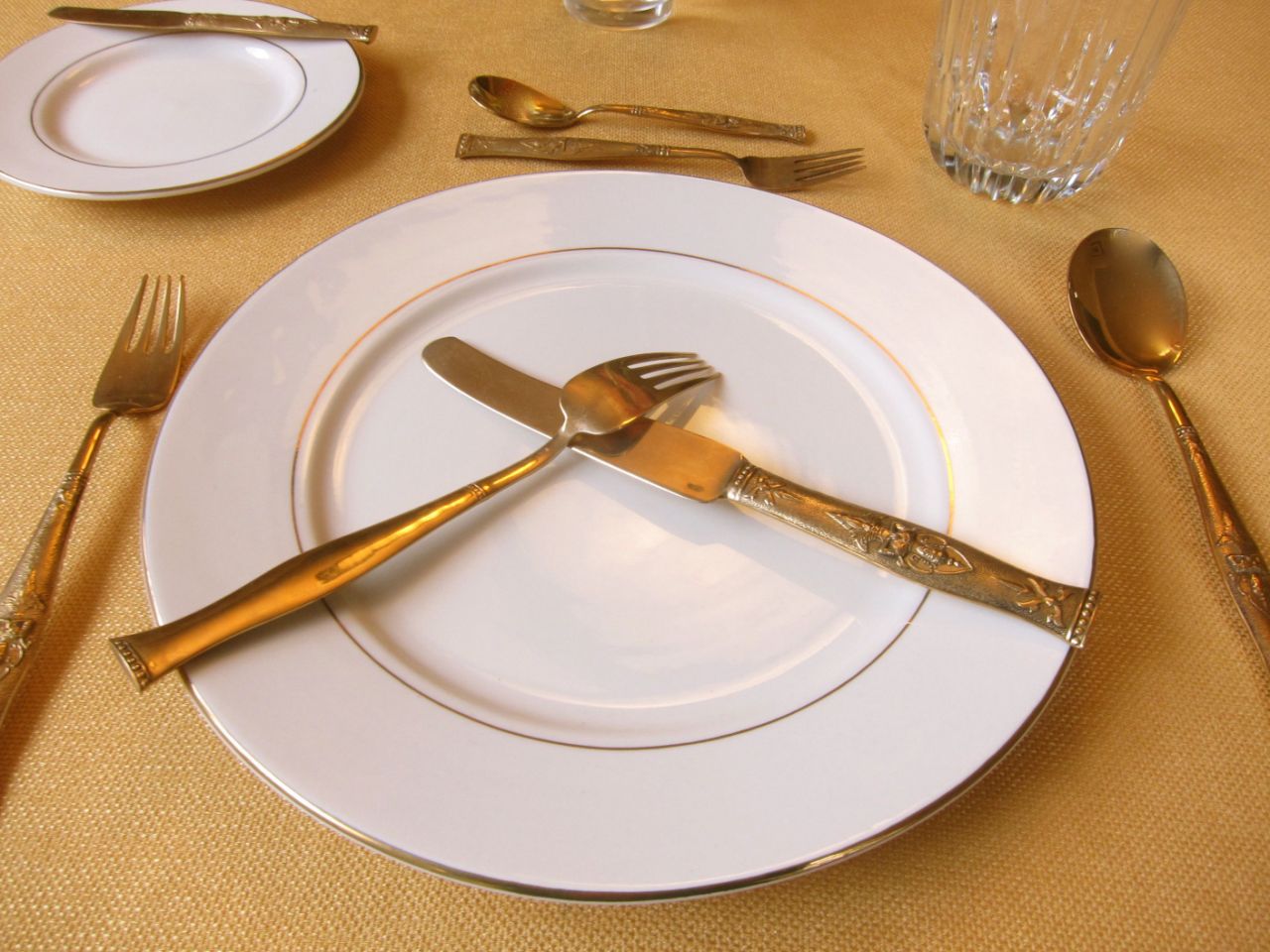



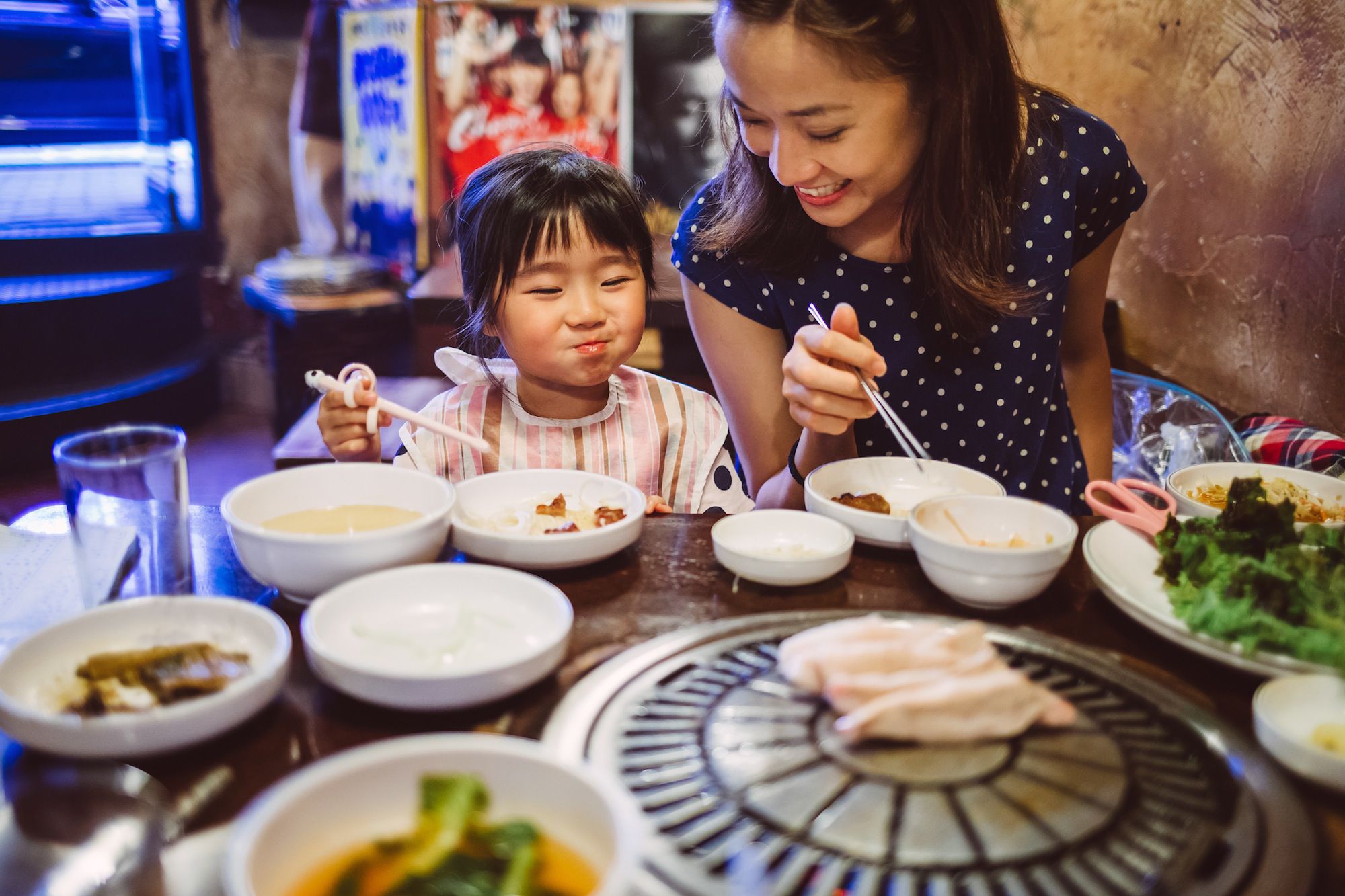
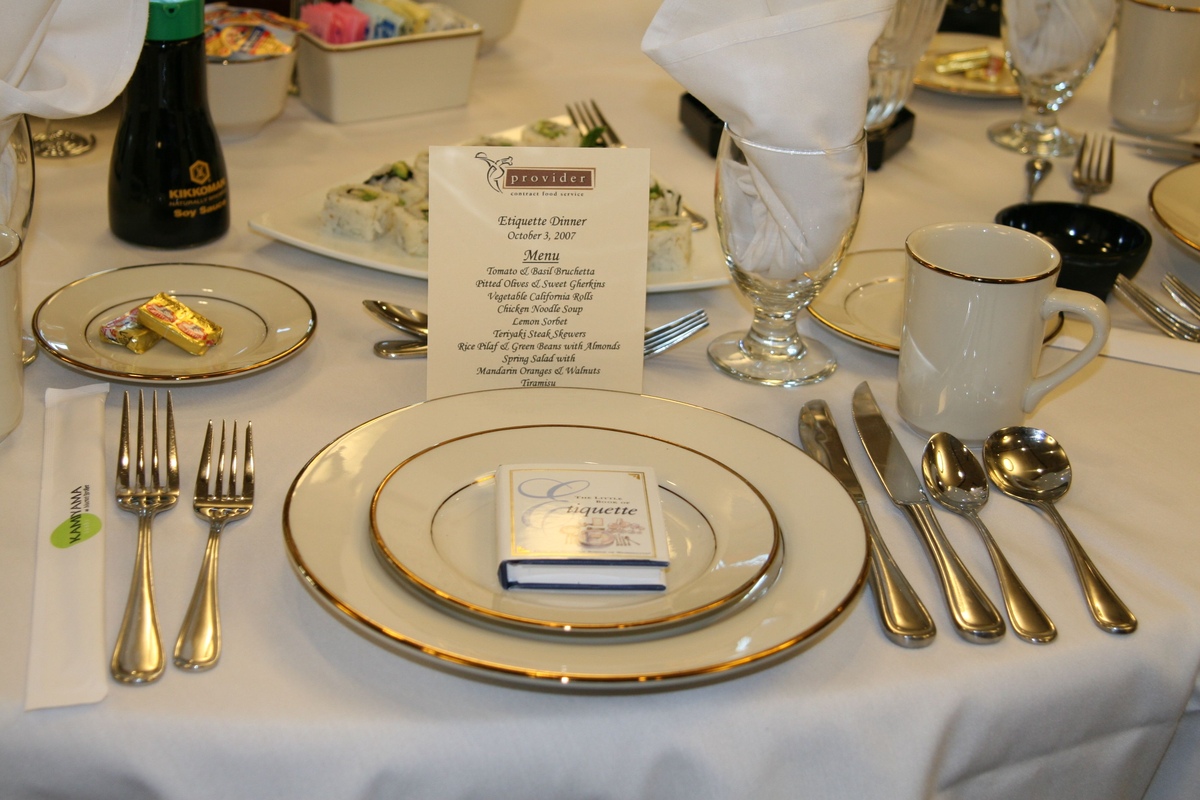




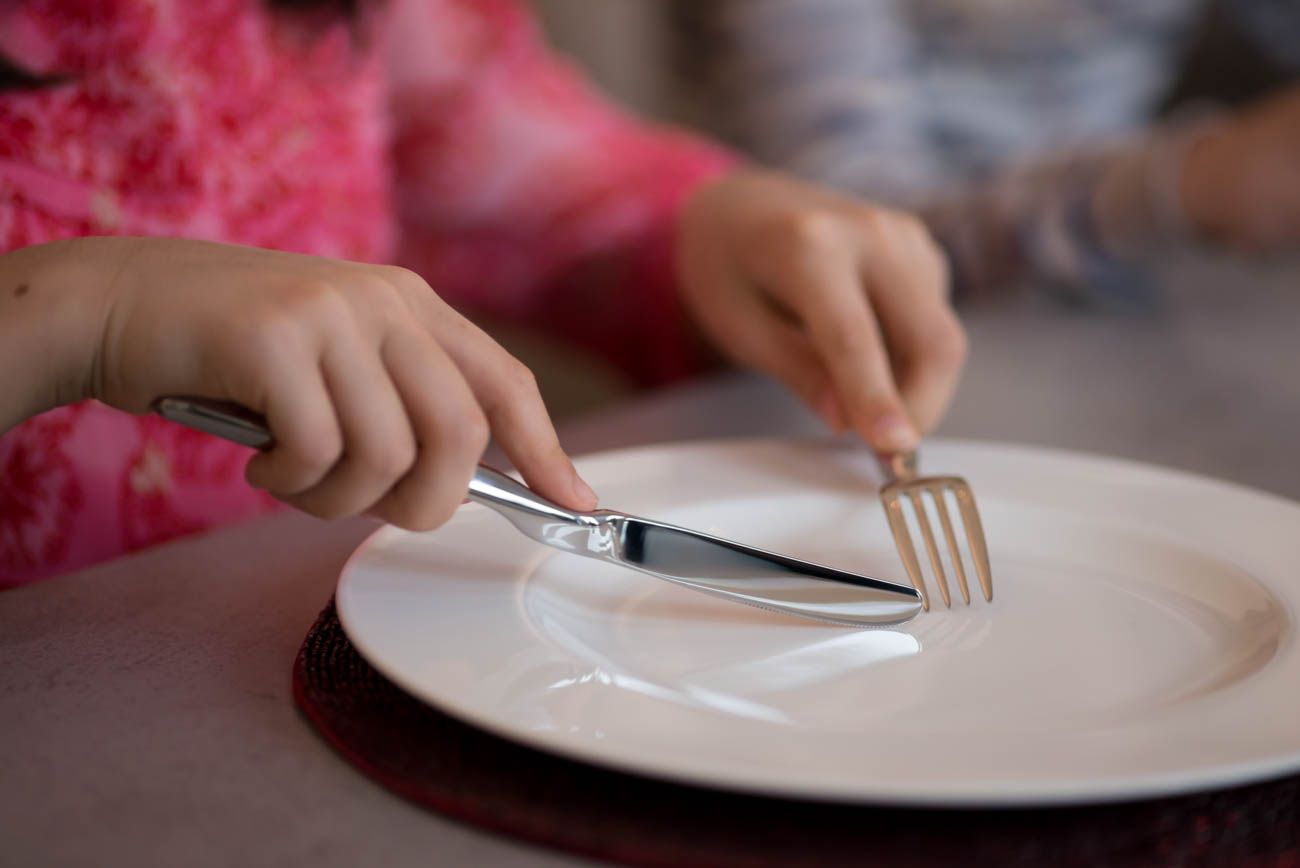



0 thoughts on “What Are The Table Manners In Japan?”